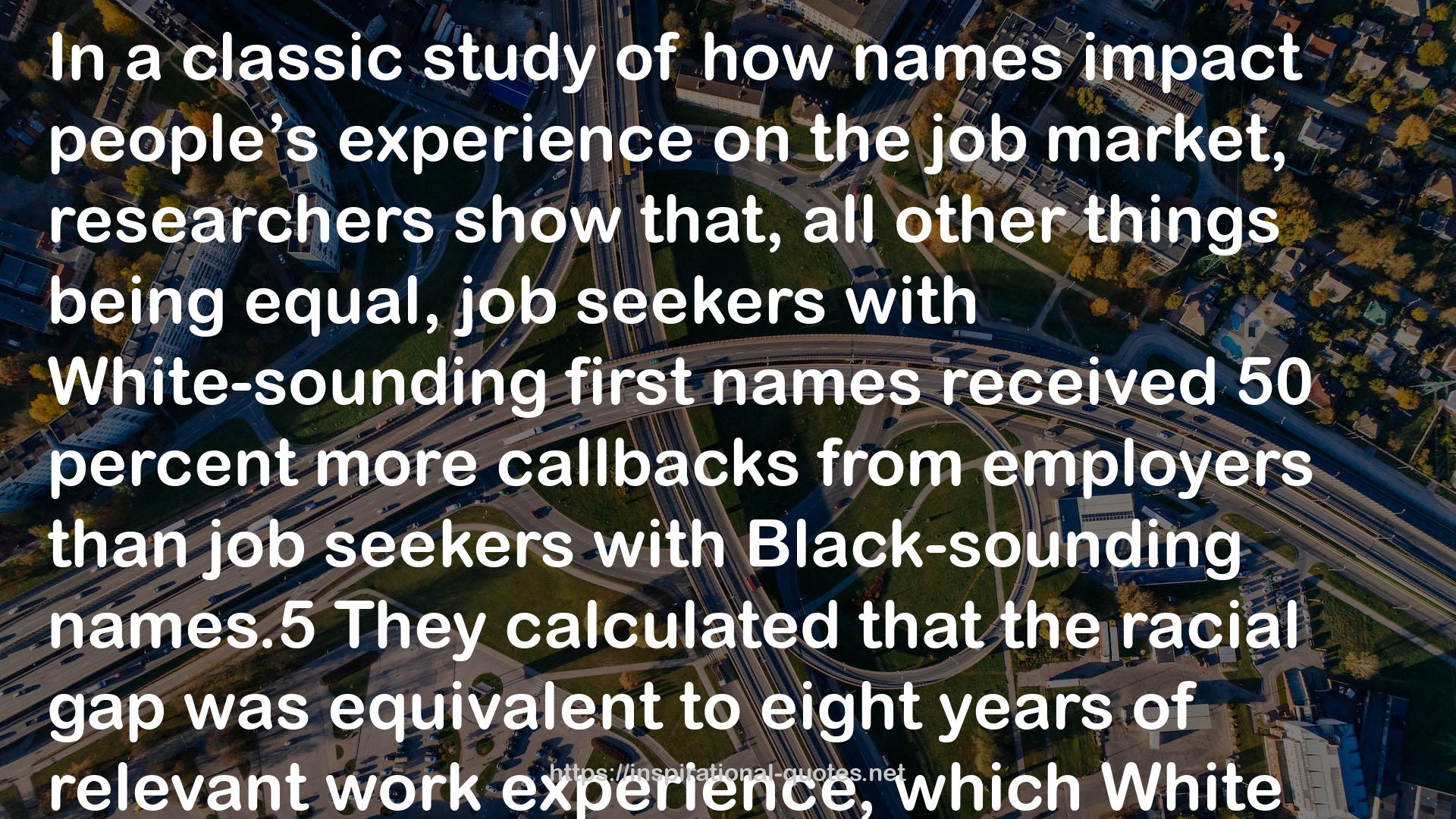" In a classic study of how names impact people’s experience on the job market, researchers show that, all other things being equal, job seekers with White-sounding first names received 50 percent more callbacks from employers than job seekers with Black-sounding names.5 They calculated that the racial gap was equivalent to eight years of relevant work experience, which White applicants did not actually have; and the gap persisted across occupations, industry, employer size – even when employers included the “equal opportunity” clause in their ads.6 With emerging technologies we might assume that racial bias will be more scientifically rooted out. Yet, rather than challenging or overcoming the cycles of inequity, technical fixes too often reinforce and even deepen the status quo. For example, a study by a team of computer scientists at Princeton examined whether a popular algorithm, trained on human writing online, would exhibit the same biased tendencies that psychologists have documented among humans. They found that the algorithm associated White-sounding names with “pleasant” words and Black-sounding names with “unpleasant” ones.7 Such findings demonstrate what I call “the New Jim Code”: the employment of new technologies that reflect and reproduce existing inequities but that are promoted and perceived as more objective or progressive than the discriminatory systems of a previous era. "
― Ruha Benjamin , Race After Technology: Abolitionist Tools for the New Jim Code
